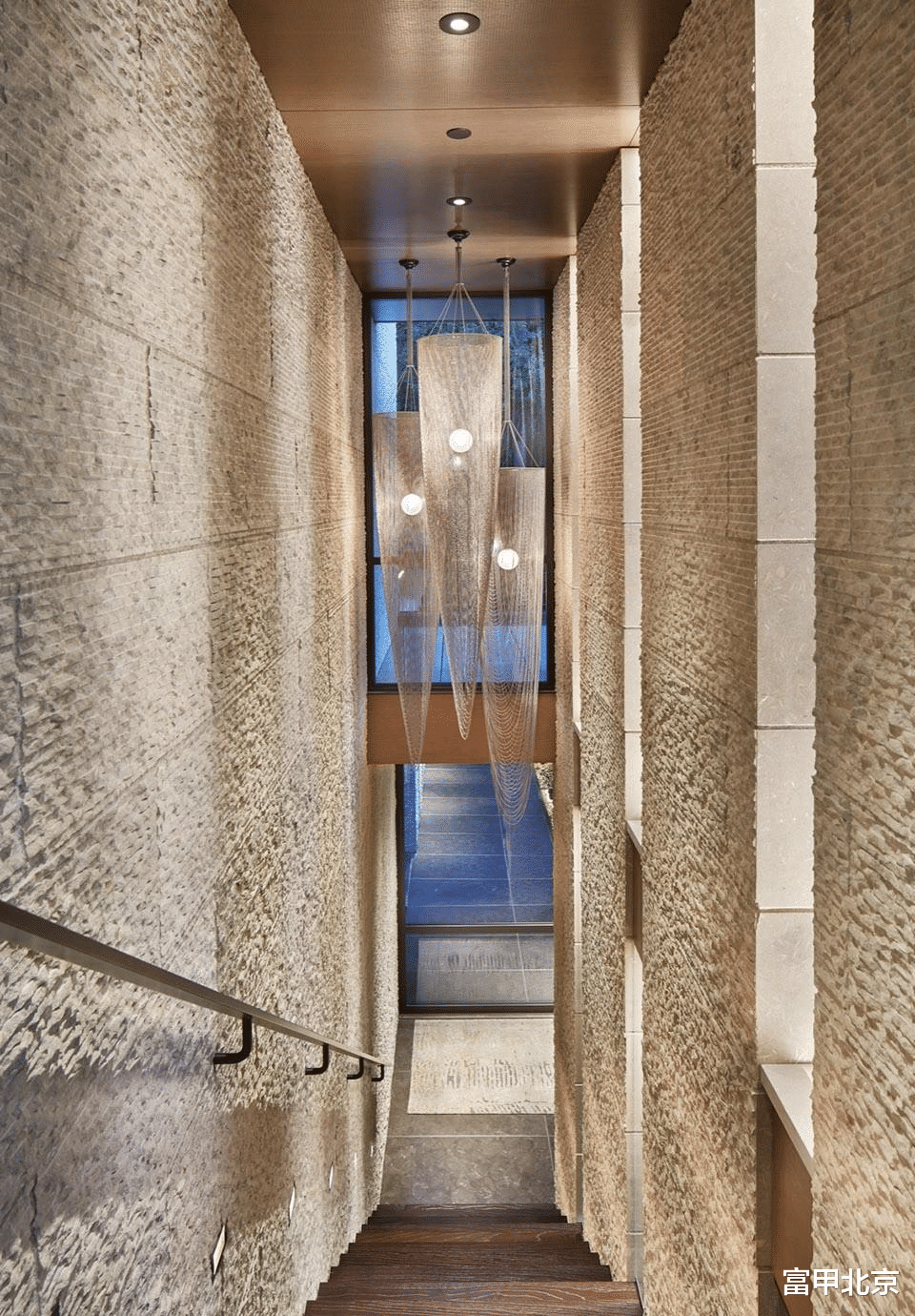The Point住宅是一座将功能需求、层次性、可塑性、自然光线、景观、模糊的室内外界限,以及与自然景观的独特联系完美结合的家庭住宅。建筑元素根据功能、结构层次和隐私级别有序地组织在一起,形成了一系列相互独立又紧密联系在一起的建筑体量。
A family home unites the demands of an extensive program with hierarchy, plasticity, natural light, views, blurring of interior/exterior space and a unique connection to the natural landscape. Building elements are organized into attached/detached pavilions based on program, hierarchy of structure and levels of privacy.
▼湖畔视角,viewing from the lake©Aaron Lietz

▼面向花园的住宅立面,facade facing the garden©Aaron Lietz
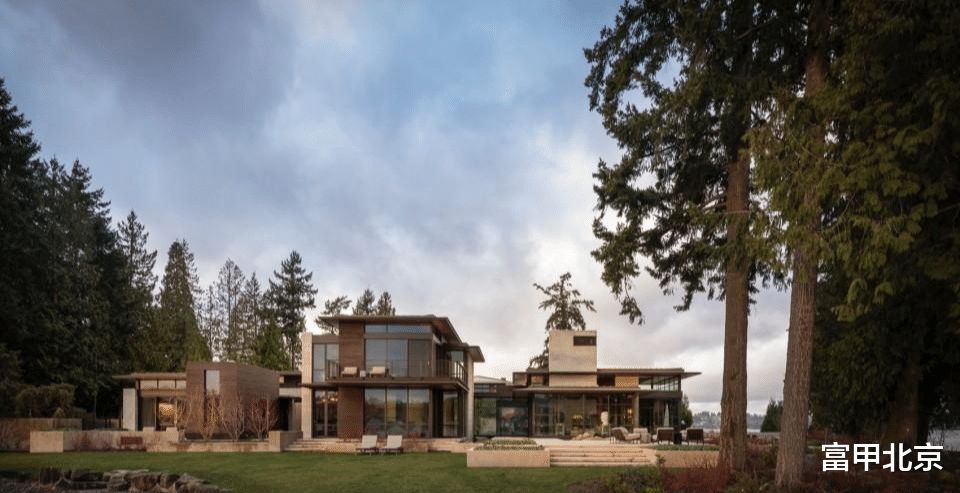
▼入口立面,entrance facade©Aaron Lietz
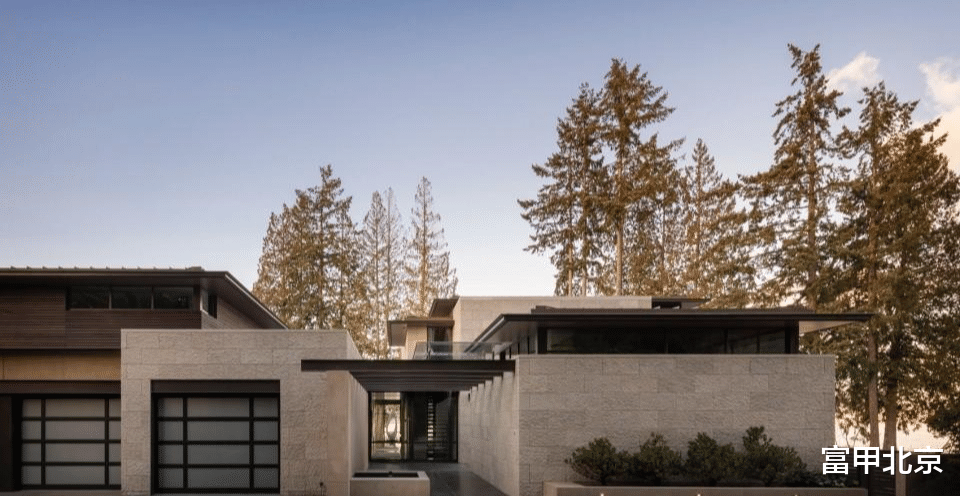
▼入口水景,waterscape at the entrance©Aaron Lietz

这些体量围绕一座南北向玻璃连桥组织,且相互错开了一定的距离,进而为室内引入了丰富的自然光线,同时也为建筑引入了从周围景观,到湖泊再到更远景观的绝佳视野。围绕轴线错位组织的建筑形式,在每个独立的体量之间产生了有趣的景观空间。木材、石头、混凝土、钢材的重复使用,加之宽敞的玻璃幕墙使建筑后退,让自然占据中心舞台。
The pavilions are dislocated around a unifying north/south glass spine/bridge that allows for an abundance of natural light, compelling vistas through the building to the surrounding landscape, lake, and beyond. The push-pull of building elements around the organizing circulation spine generates intriguing exterior landscaped spaces that inhabit the zones between each pavilion. A simple, cyclical palette of wood, stone, concrete, steel, and expansive window walls allow the architecture to recede and let nature take center stage.
▼小庭院,courtyard©Benjamin Benschneider
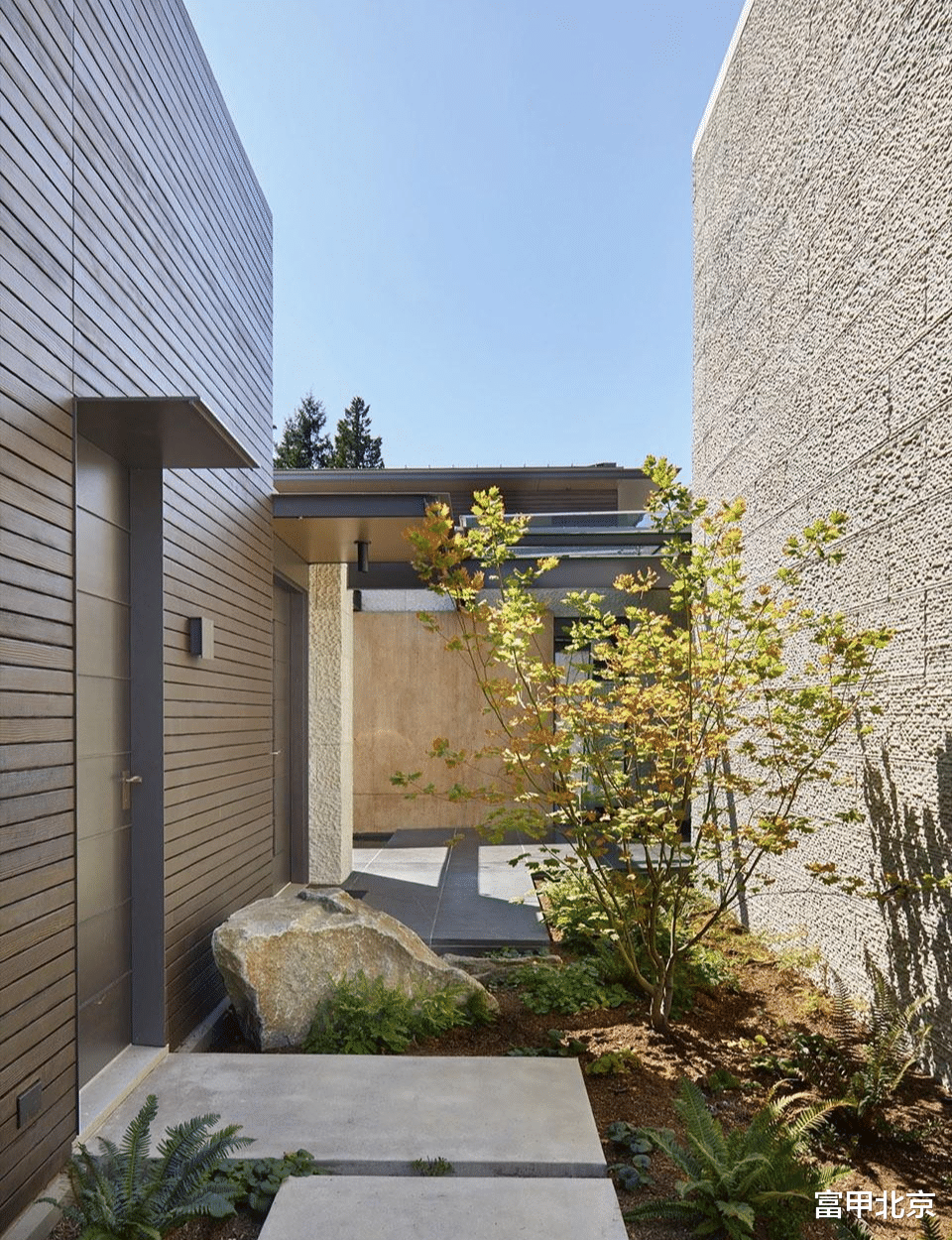
▼入口水景,waterscape at the entrance©Benjamin Benschneider
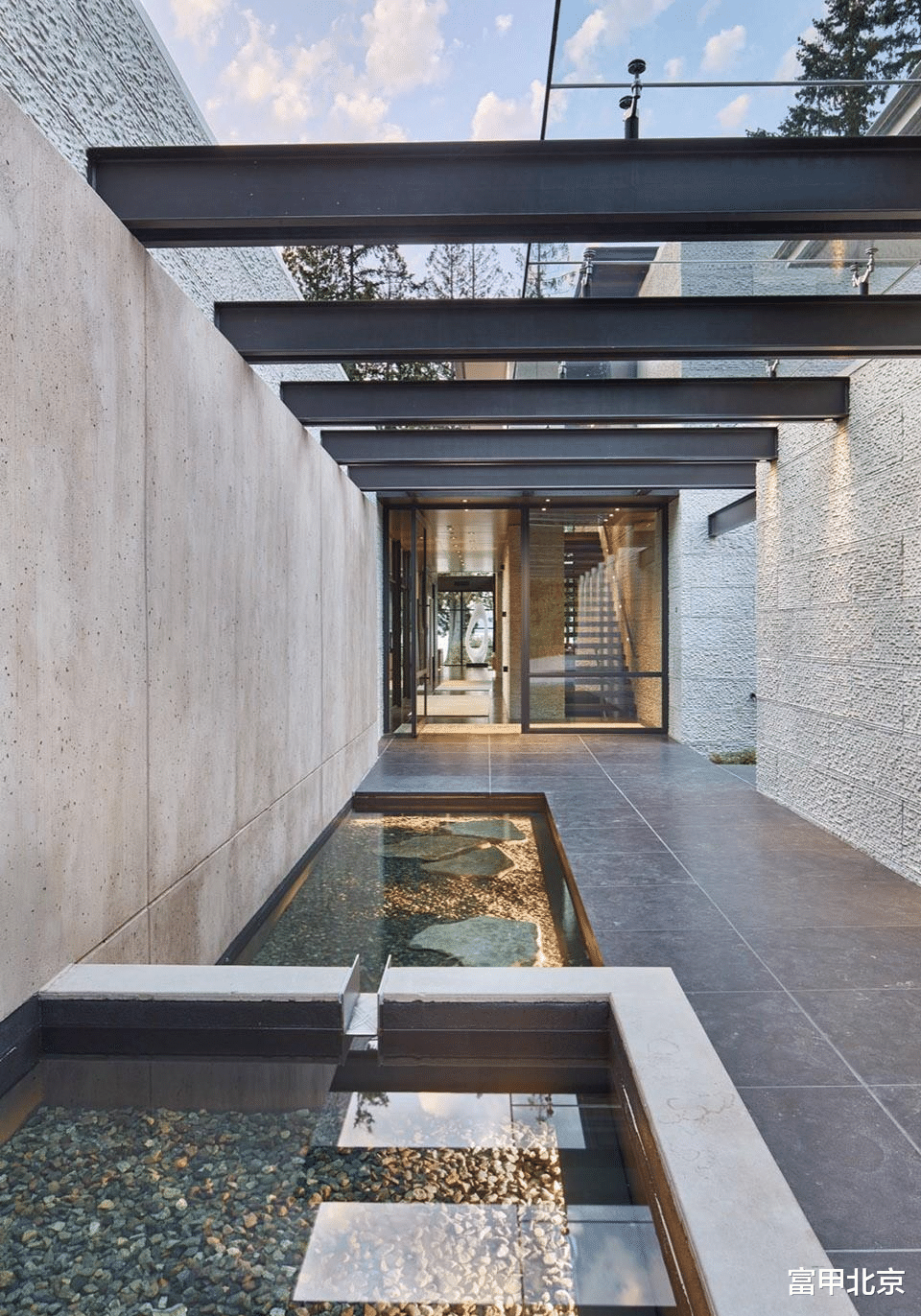
▼水景与连廊,waterscape and glazing corridor©Benjamin Benschneider
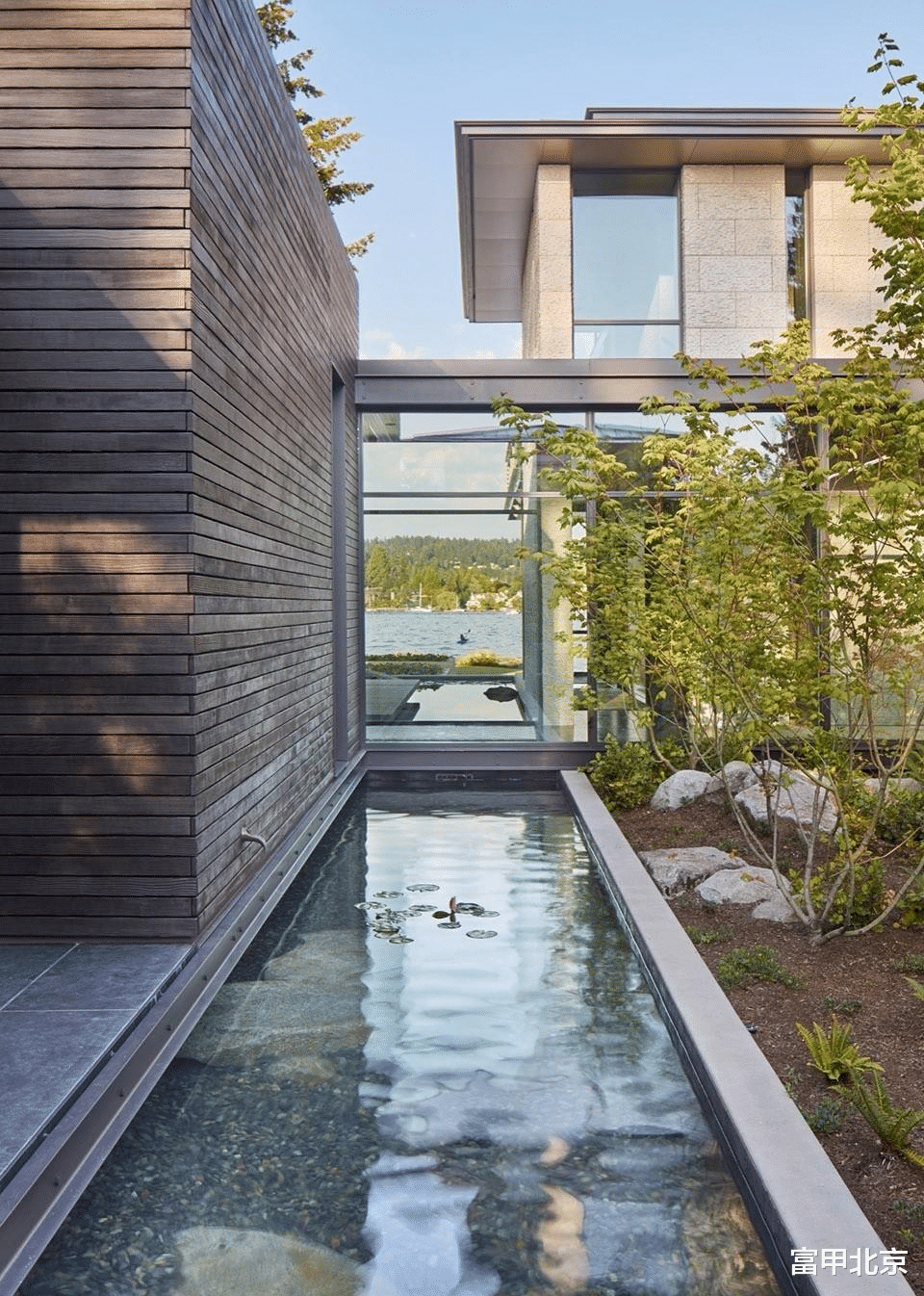
▼细部,details©Benjamin Benschneider
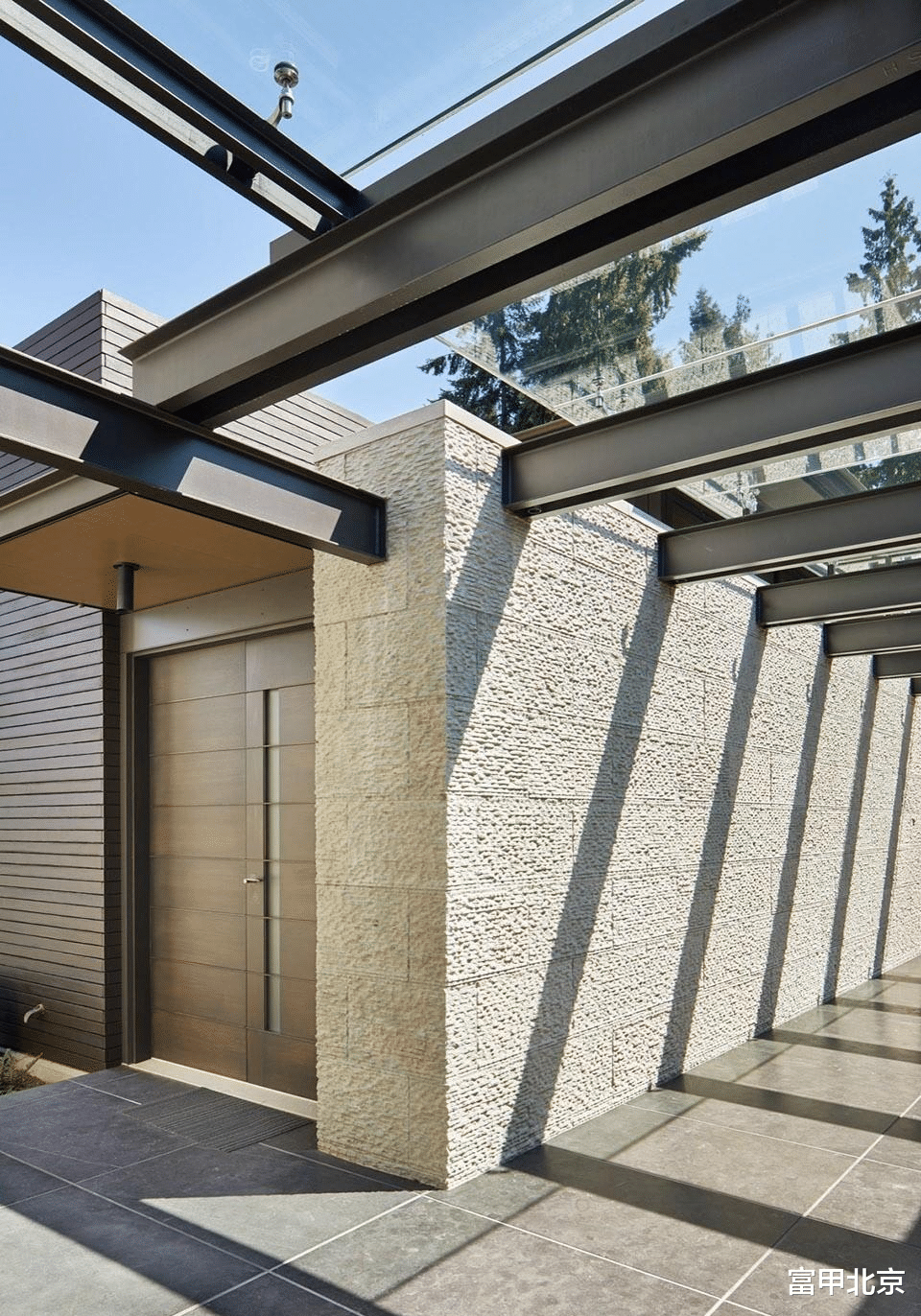
一系列的水景加强了住宅与湖泊的联系。汽车庭院边缘以两个重要体量以西的三个集水箱为水景持续提供了水源,这些水景似乎在建筑下流动,形成更大的建筑水景。然后,这些水景汇入到更大尺度的水体中,最终发展成毗邻湖泊的天然池塘,在雨后,池塘在视觉上与远处的湖泊联系在了一起。
A series of water features reinforce the pavilion’s relationship to the lake. A spring box at the edge of the auto court and a spring box west of the two main pavilions feed water features which appear to flow under the buildings into a larger architectonic water feature. This water feature then pours into a larger body of water that was developed to feel like a native pond adjacent to the lake. This pond is connected visually (and when it rains, literally) to the lake beyond.
▼夜景,night view©Benjamin Benschneider
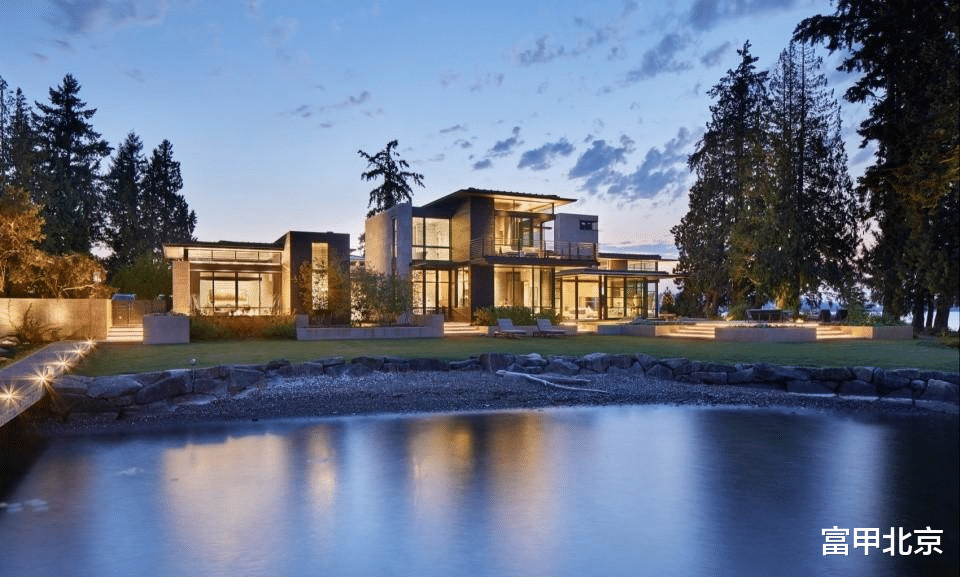
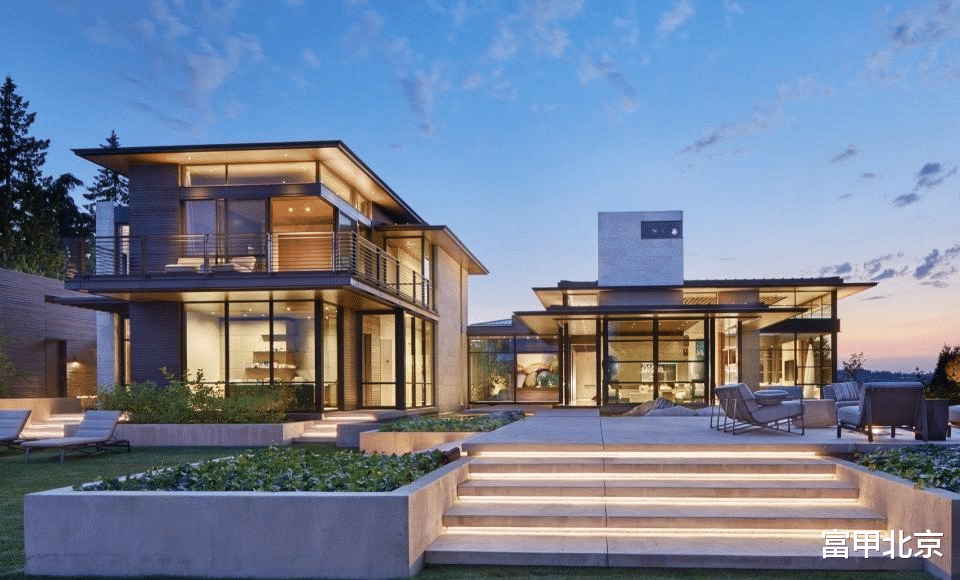
▼户外生活区,outdoor living space©Benjamin Benschneider
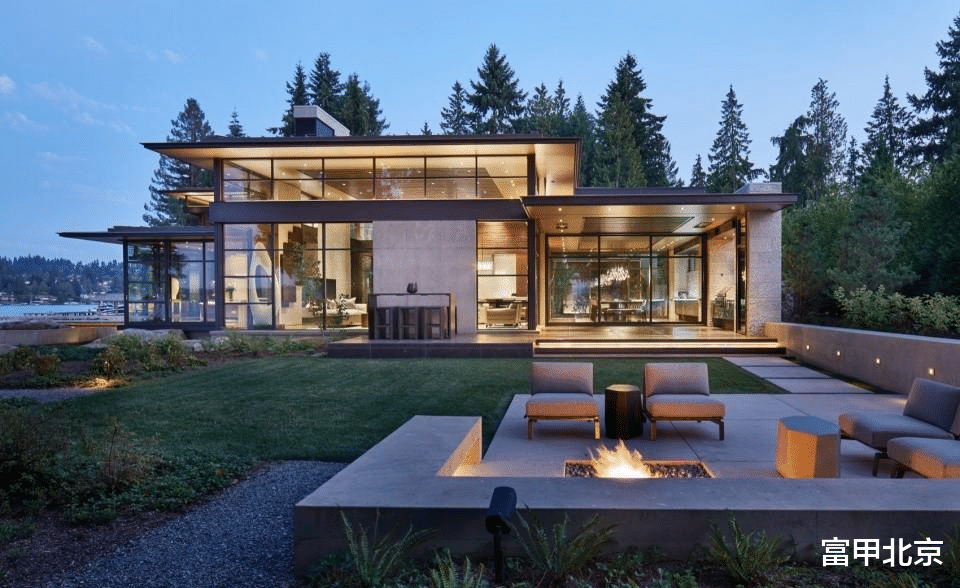
露台位于主要生活区附近,以便进一步将建筑与场地融为一体。现有的整体防水壁被三个新的小水湾穿过,将湖岸恢复到最自然的优美状态,反过来又允许家人在水边享受活动。隐藏在北侧的石头庭院创造了一处与湖岸相连的私人空间,两处带有火塘的室外露台就位于主要住宅体量的不远处,供家庭在晚上欣赏湖泊。
Terraces are positioned adjacent to primary living areas in order to further integrate the buildings to the site. The existing monolithic bulkhead is pierced by three new coves that restore the lakeshore back to its imagined natural beauty which in-turn allows the family to enjoy activities at the water’s edge. A hidden stone patio to the north creates a private space to engage the lakeshore, and two outdoor rooms with fire pits were placed at some distance from the pavilions for the family to enjoy the lake at night.
▼人工水池,artificial pond©Aaron Lietz
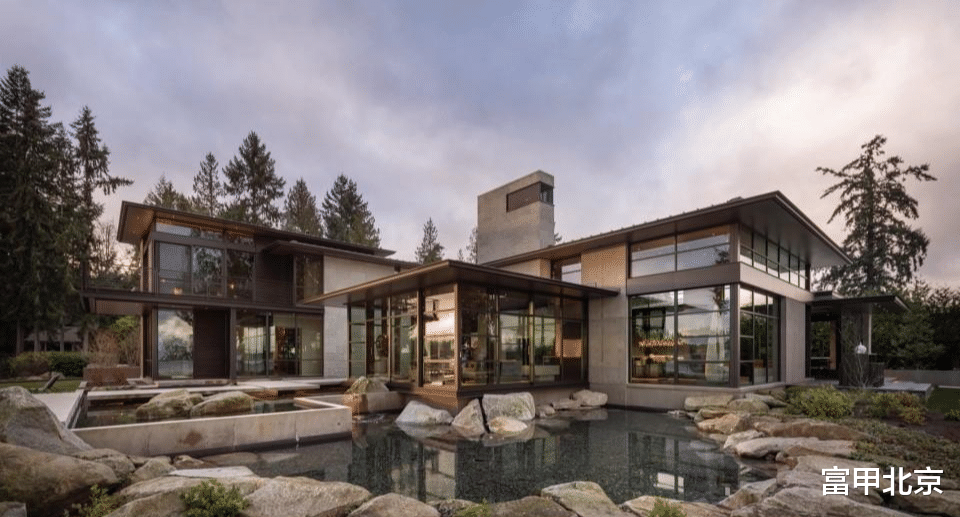
▼建筑与景观的结合,combination of architecture and landscape©Benjamin Benschneider

为了将住宅的主要生活区直接连接到邻近的湖岸,建筑师特别设计了一种大型混凝土“睡莲垫”,它们似乎漂浮在水景上,并在住宅和主露台之间创造出干燥的通行路径。为了平衡原有草坪对环境的影响,花园中种植了大量适合当地环境的本地植物。这些策略使建筑、景观和自然无缝融合。
In order to directly connect the main living areas of the house to the adjacent lakeshore, large concrete “lily pads” were designed, which appear to float on the water feature, and provide dry passage over it between the house and the main terrace. In order to balance the environmental impact of a large pre-existing lawn, the remaining gardens utilize a palette of contextually appropriate native plant materials. The end result is a seamless integration of architecture, landscape architecture, and nature.
▼露台,terrace©Aaron Lietz
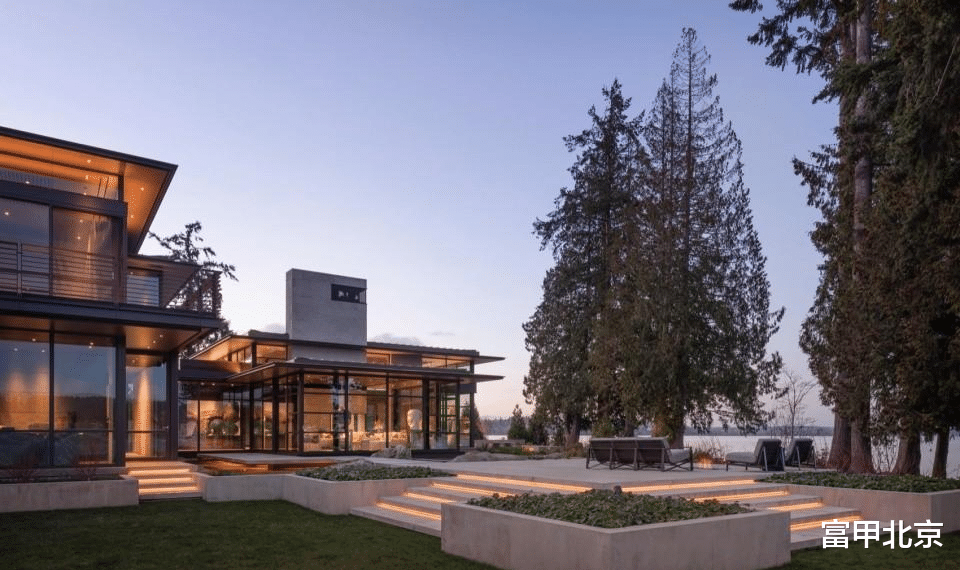
▼大型混凝土“睡莲垫”,large concrete “lily pads”©Aaron Lietz
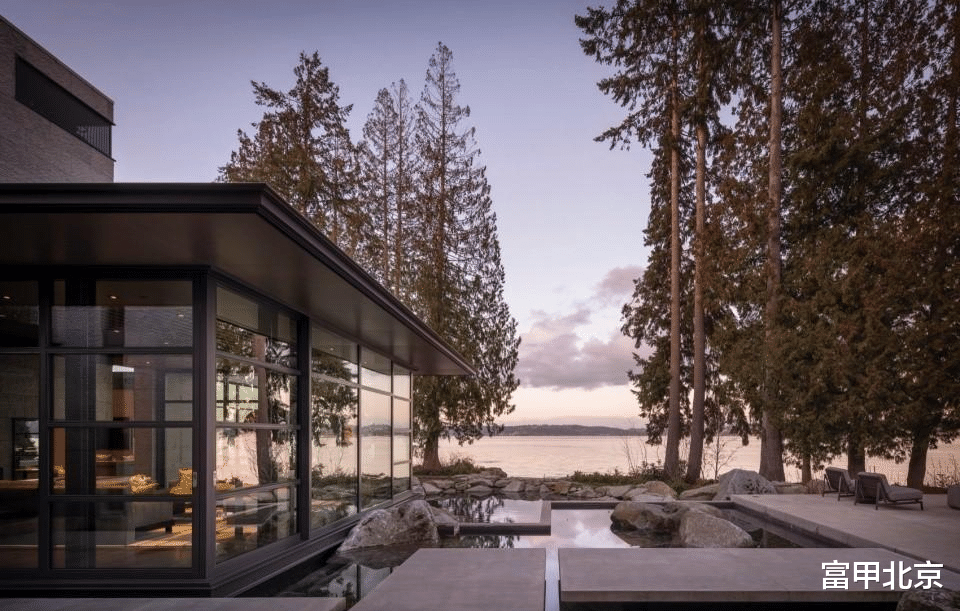
▼漂浮于水面的路径,path floating on the water©Benjamin Benschneider

低能耗的双层玻璃热断裂钢门窗由100%回收材料制成,聚焦的视野角度使周围景观一览无遗,同时也能够最大限度地进行采光,并提供被动通风。整栋住宅的外围护结构中都采用了高R值泡沫保温材料,这种材料不仅施工便捷还具有极高的节能性。地板辐射采暖/制冷系统能够利用地热能为整栋建筑进行供暖或降温。
Low-E energy efficient double-pane thermally broken steel windows and doors made from 100% recycled materials with narrow sight lines allow for unobstructed views of the surrounding landscape, maximize daylighting, and provide passive ventilation. High R-value foamed-in-place insulation was utilized throughout the structure for an energy efficient envelope. Geothermal energy is captured to heat/cool the building through radiant floor heating/cooling.
▼客厅,living room©Aaron Lietz
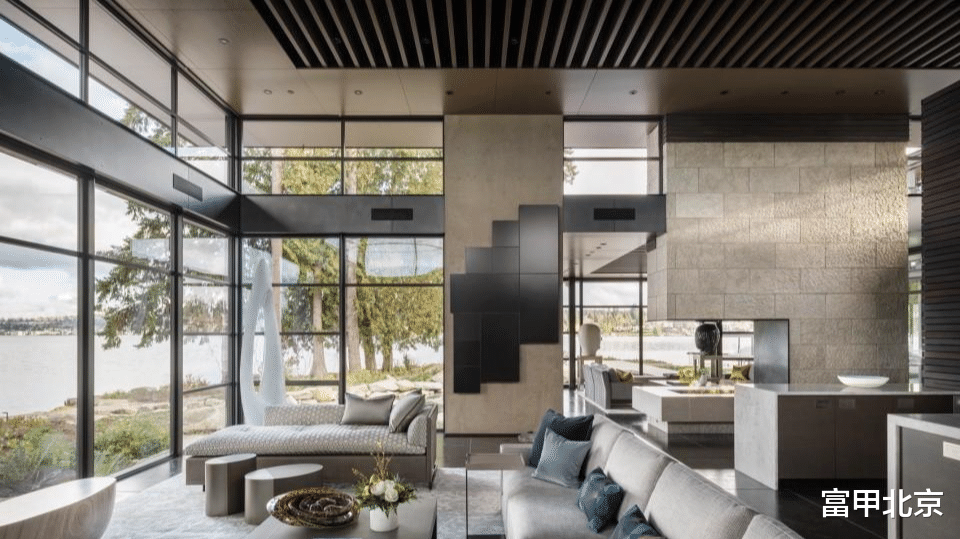
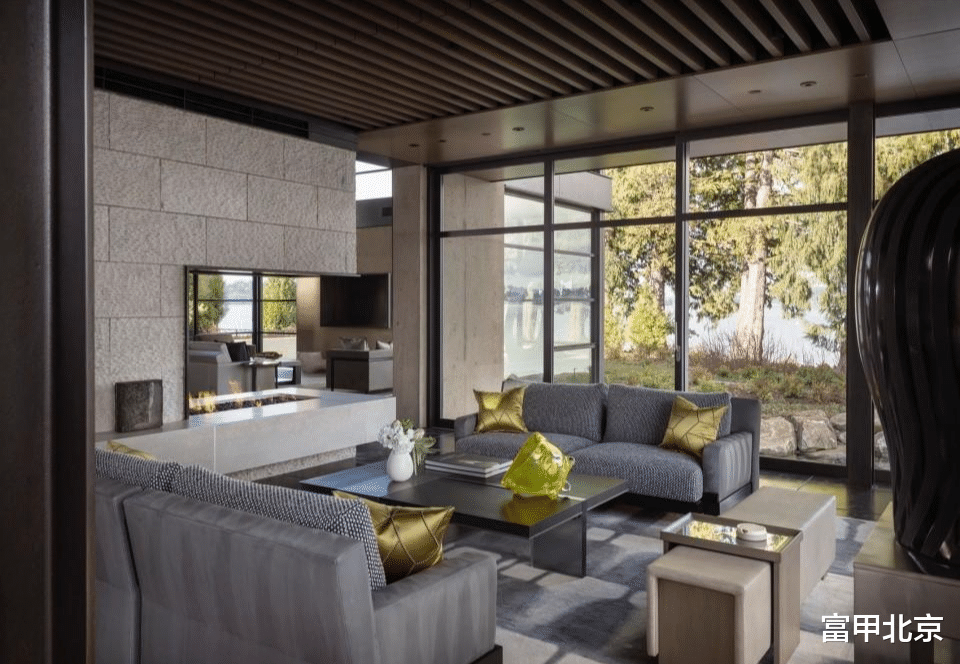
▼大面积的落地窗,large area of floor-to-ceiling windows©Aaron Lietz
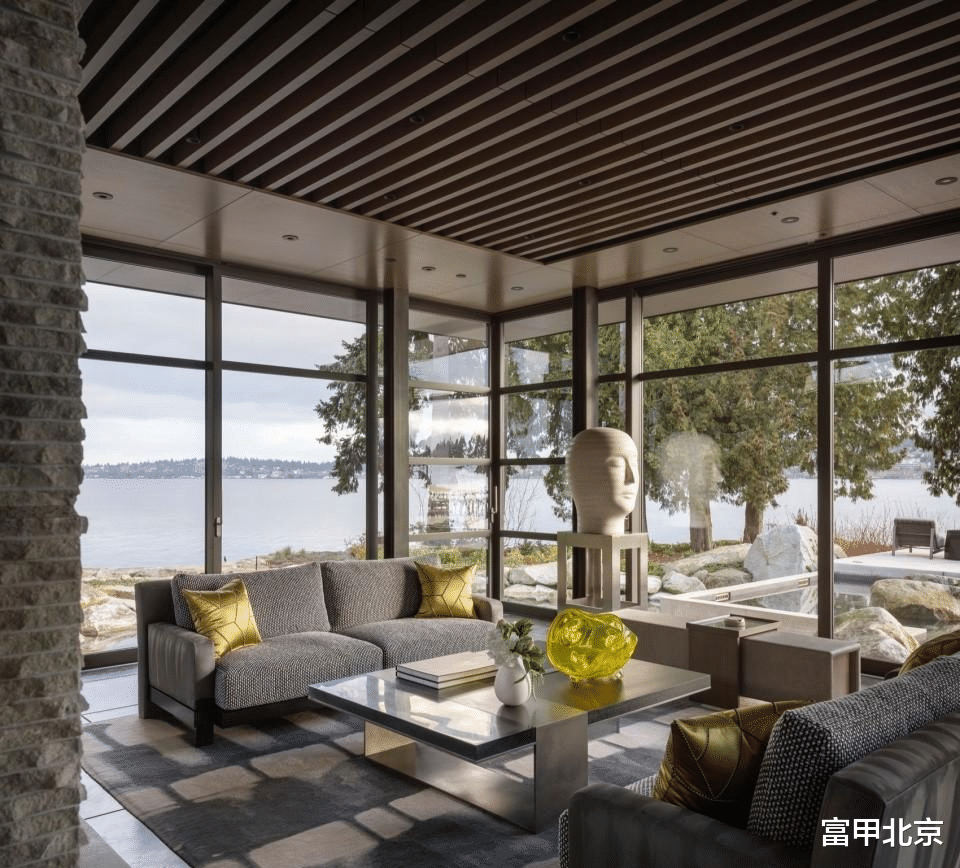
▼餐厅,dining area©Aaron Lietz
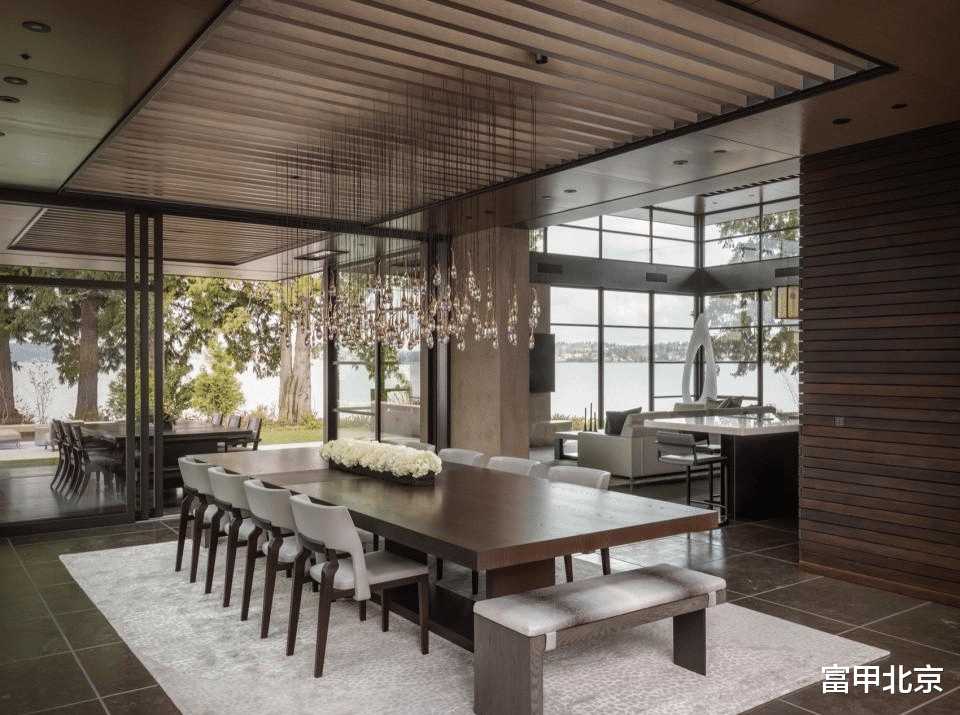
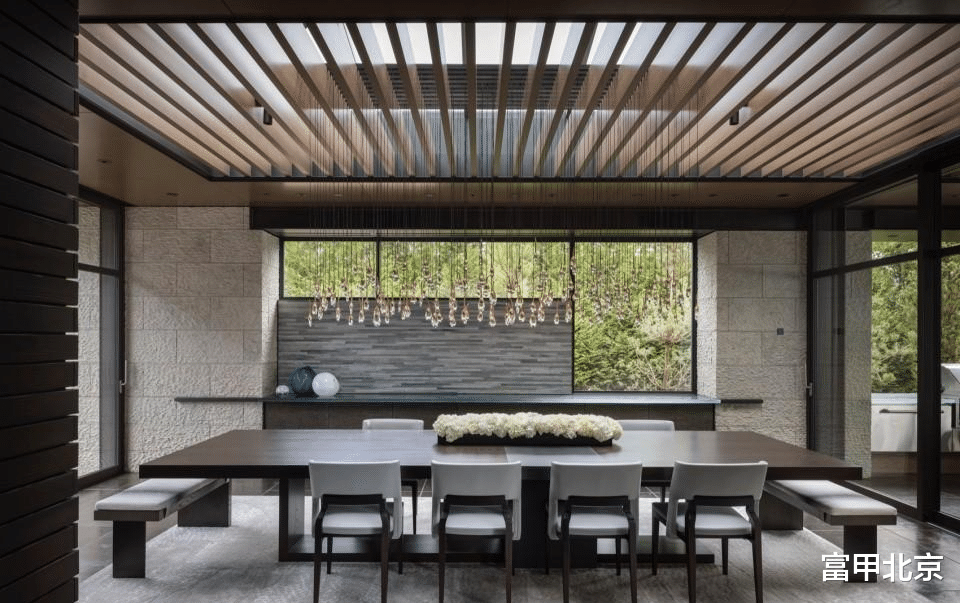
▼厨房,kitchen©Aaron Lietz
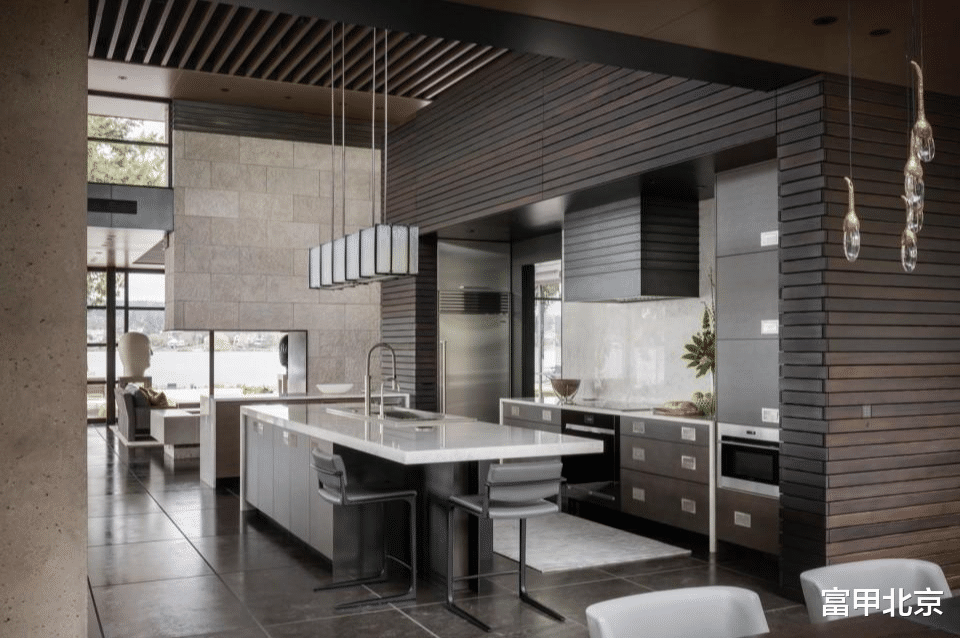

▼走廊,corridor©Aaron Lietz
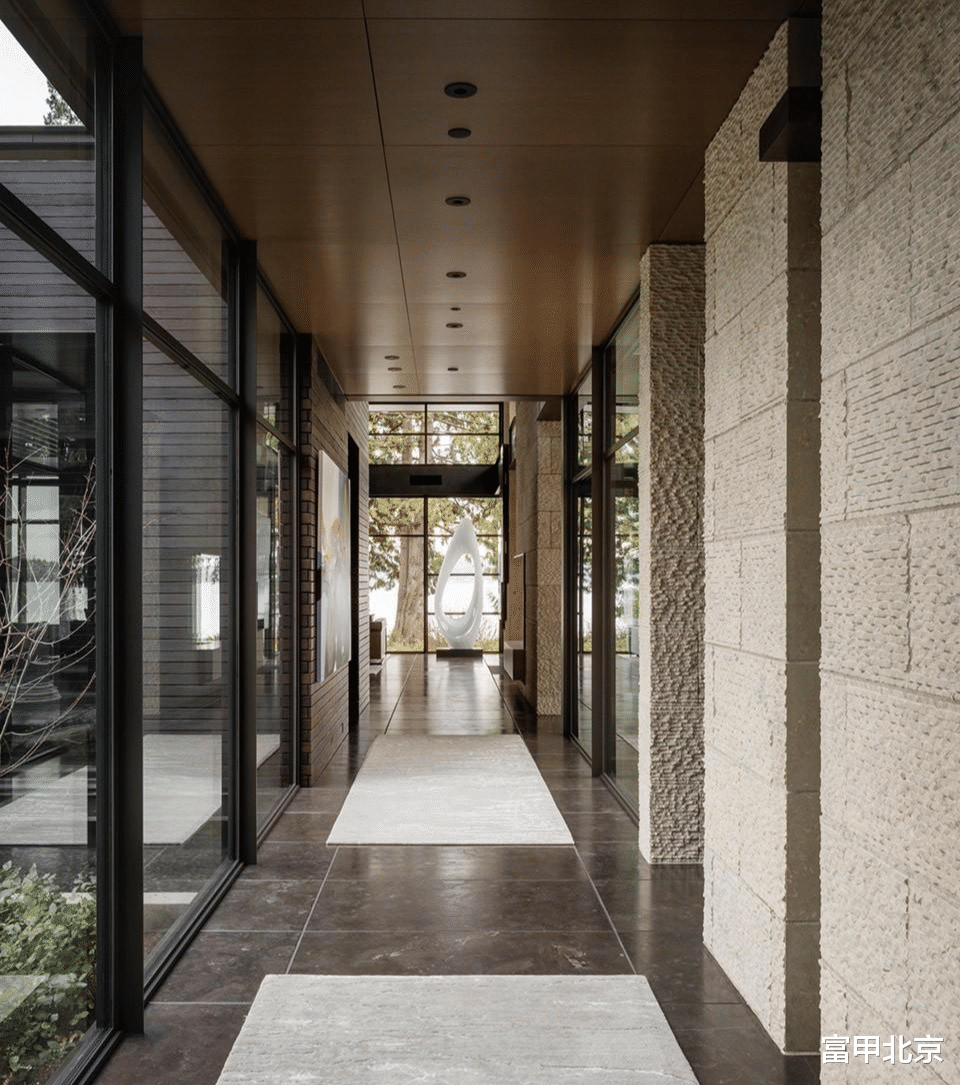
▼玄关,entrance area©Benjamin Benschneider
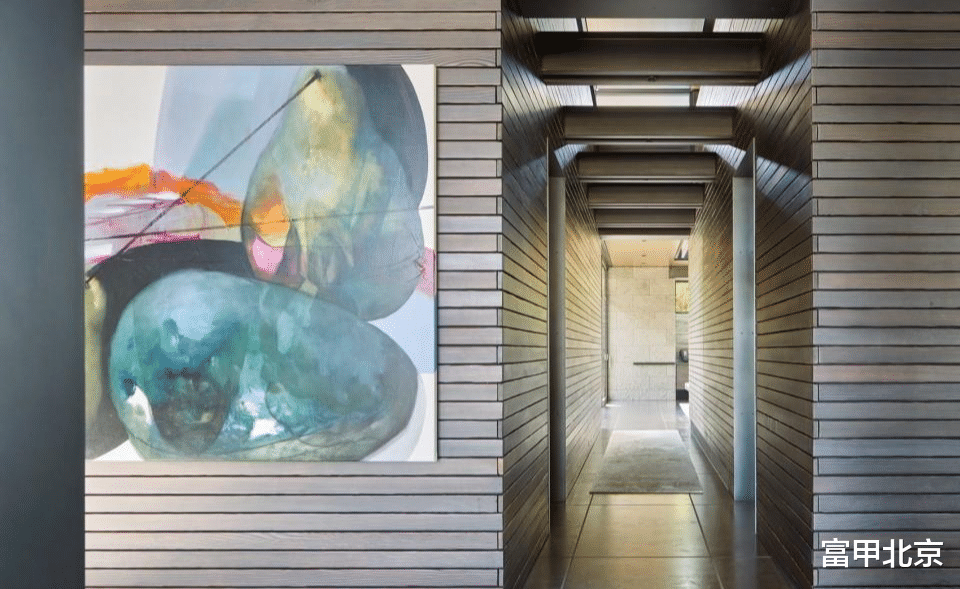
▼客厅,living room©Benjamin Benschneider
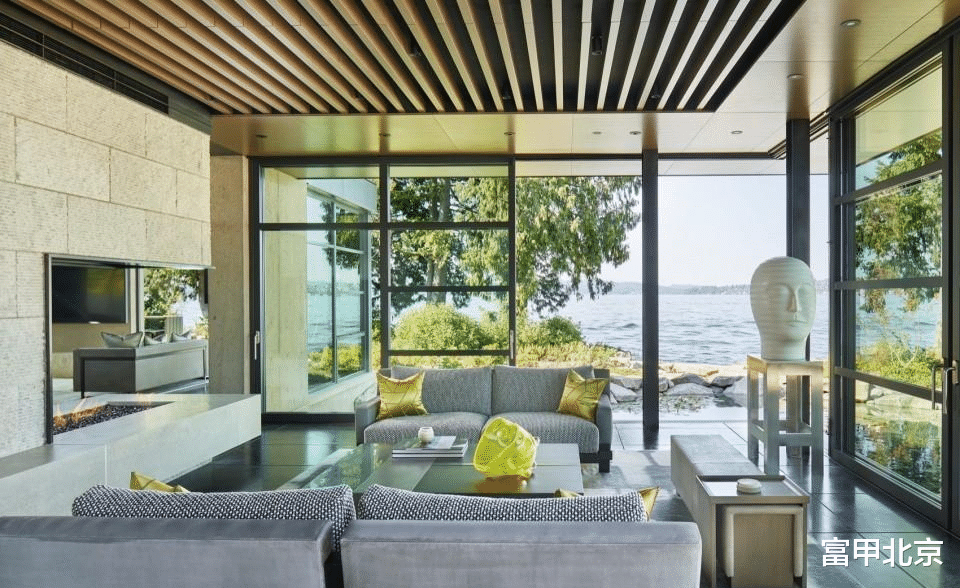
▼壁炉,fireplace©Benjamin Benschneider

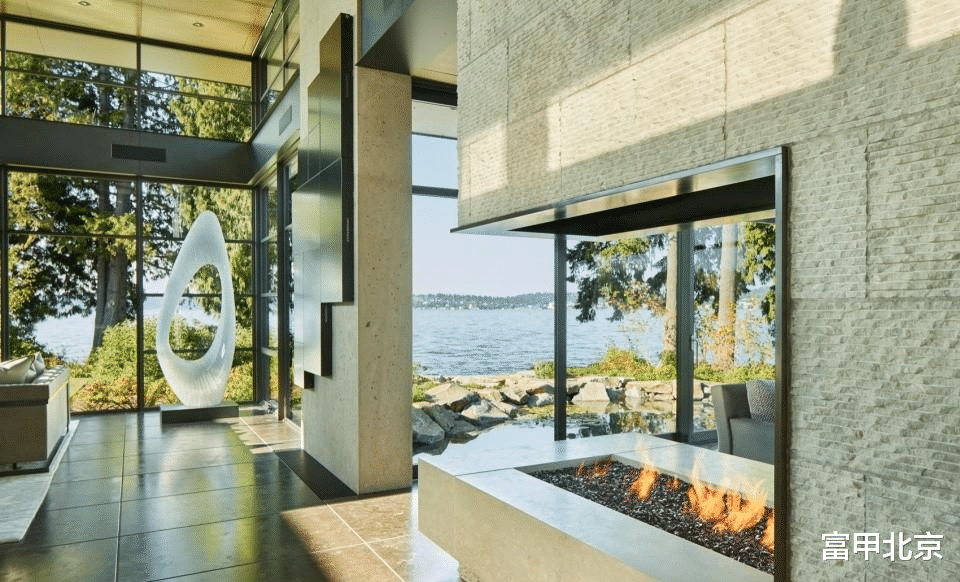
▼开放式的厨房与客厅,open living- kitchen©Benjamin Benschneider
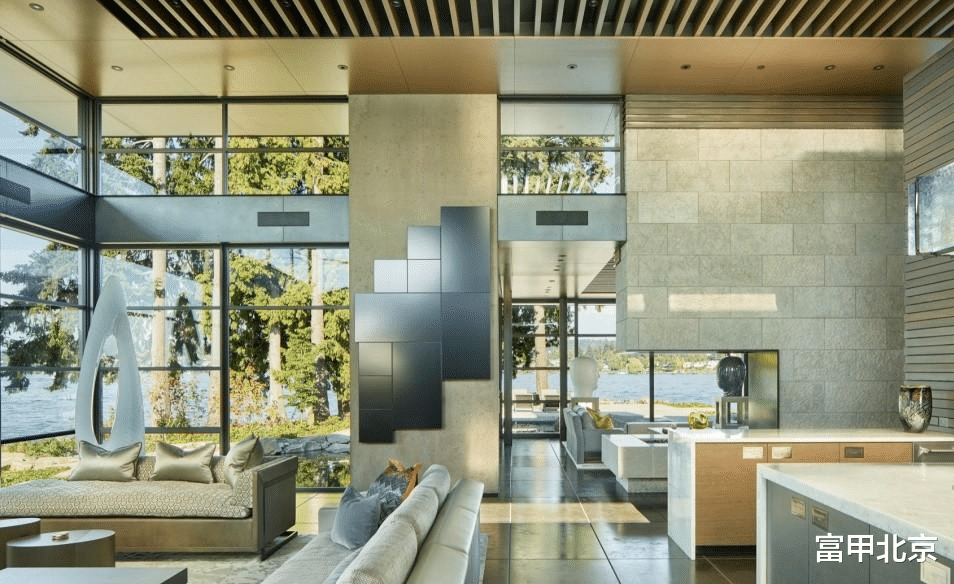

▼餐厅,dining area©Benjamin Benschneider
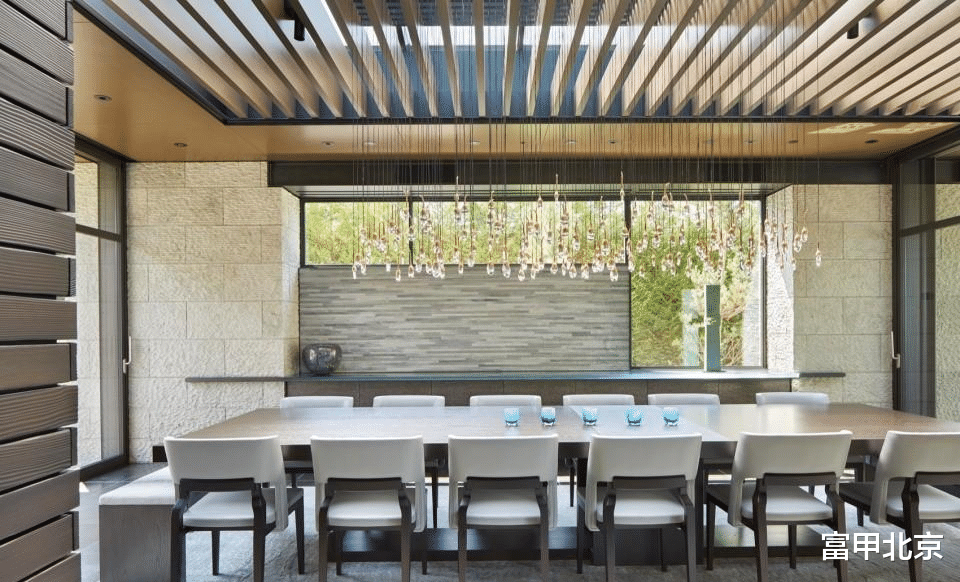
紫外线水净化系统以及水景内的自然过滤系统能够处理并生成循环水,同时湖水可以用作辅助灌溉(在当地司法管辖区允许的情况下),以保存淡水资源。
Ultraviolet water purification systems along with natural in-place filtering beds within the water features allow for the use of recirculated/recycled water and lake water can be utilized as auxiliary irrigation (as allowed by the local jurisdiction) to conserve fresh water.
▼卧室,bedroom©Aaron Lietz

▼卧室细部,details of the bedroom©Aaron Lietz

▼套房浴室,bathroom©Aaron Lietz
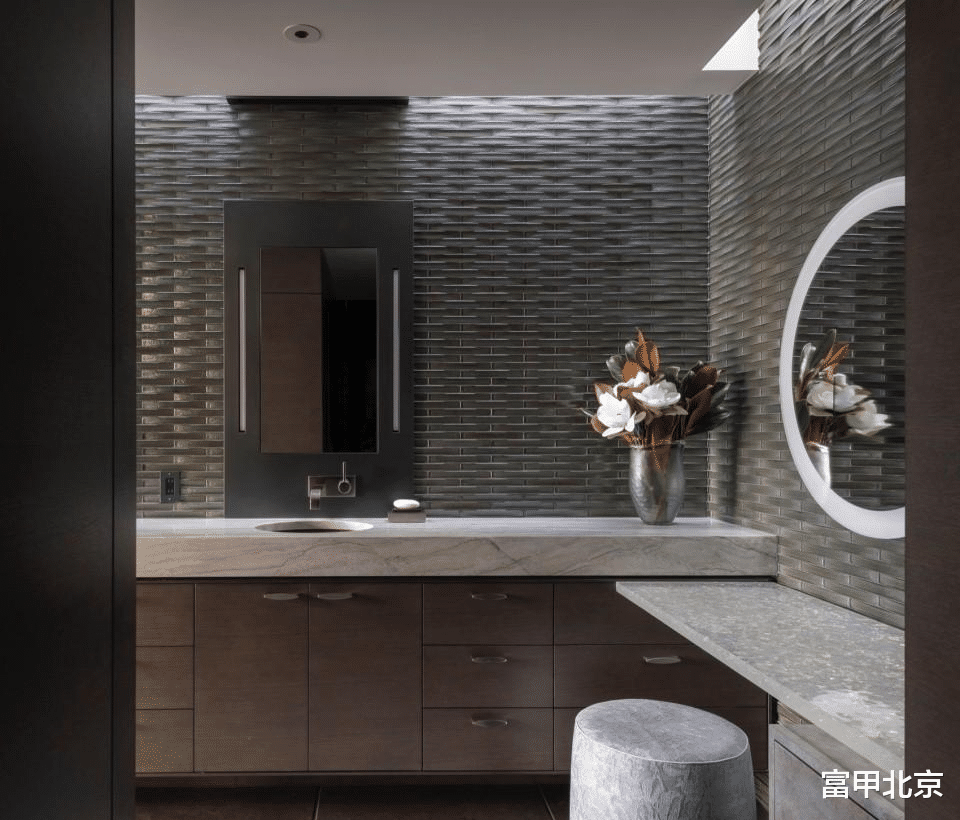
▼卧室,bedroom©Aaron Lietz
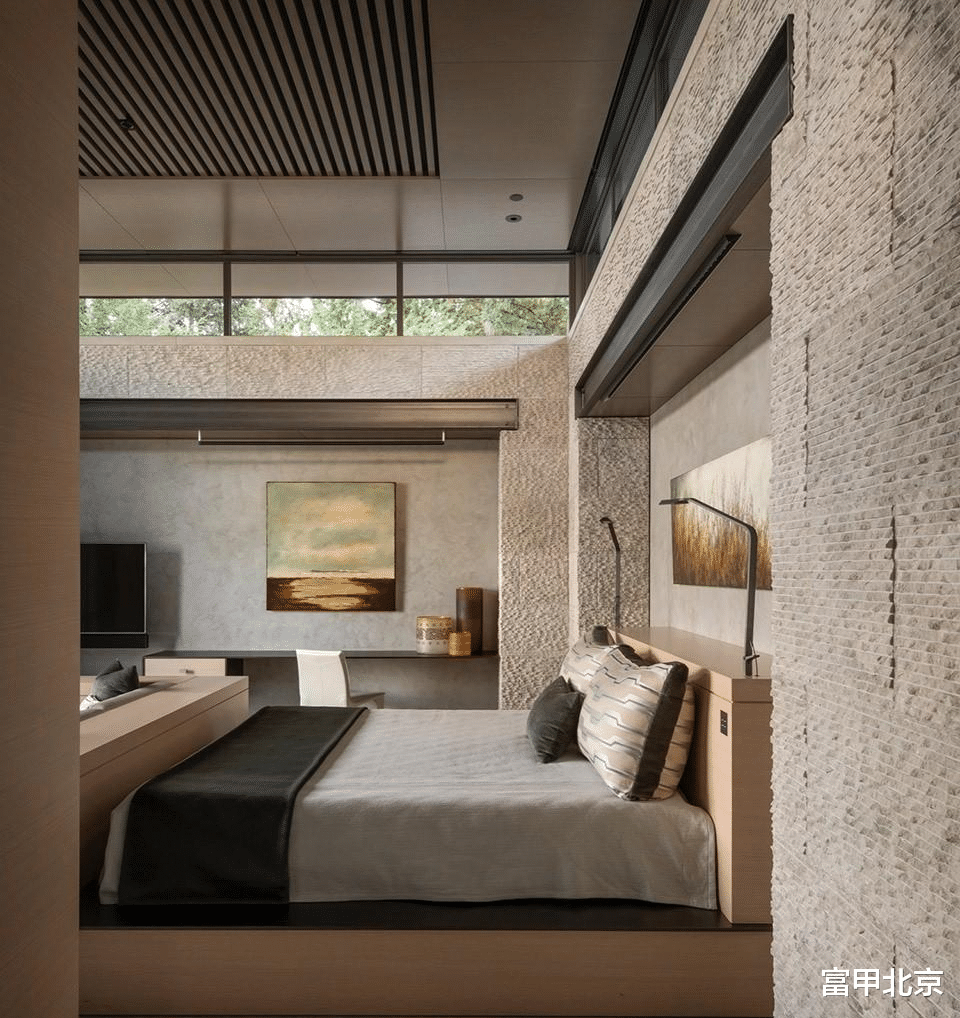
▼浴室,bathroom©Aaron Lietz

▼书房,study©Benjamin Benschneider
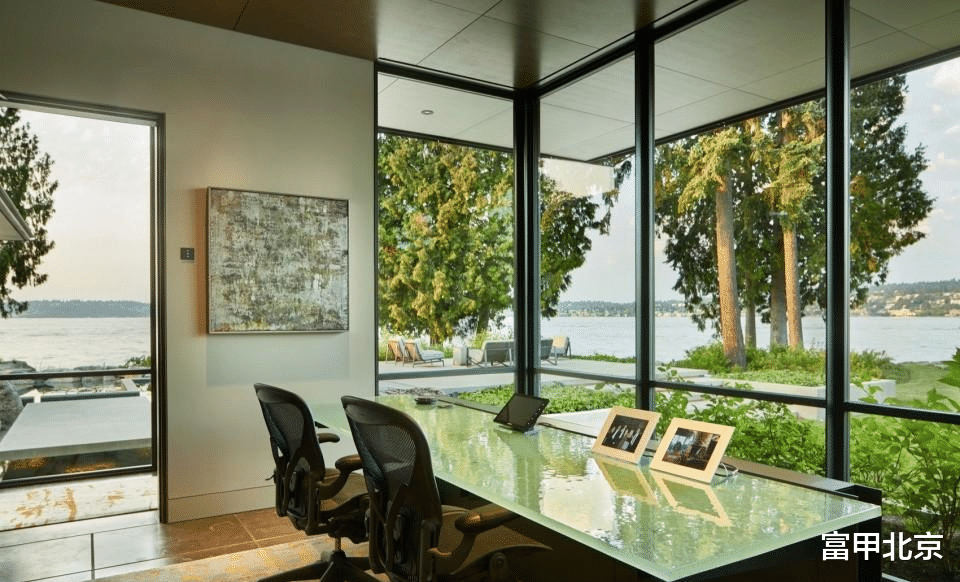
▼卧室夜景,night views of the bedroom©Benjamin Benschneider
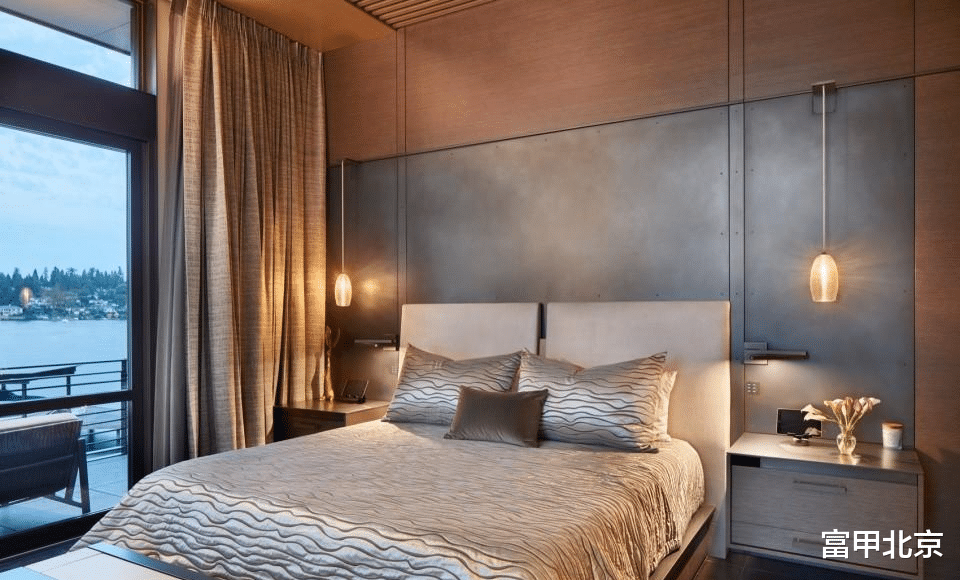
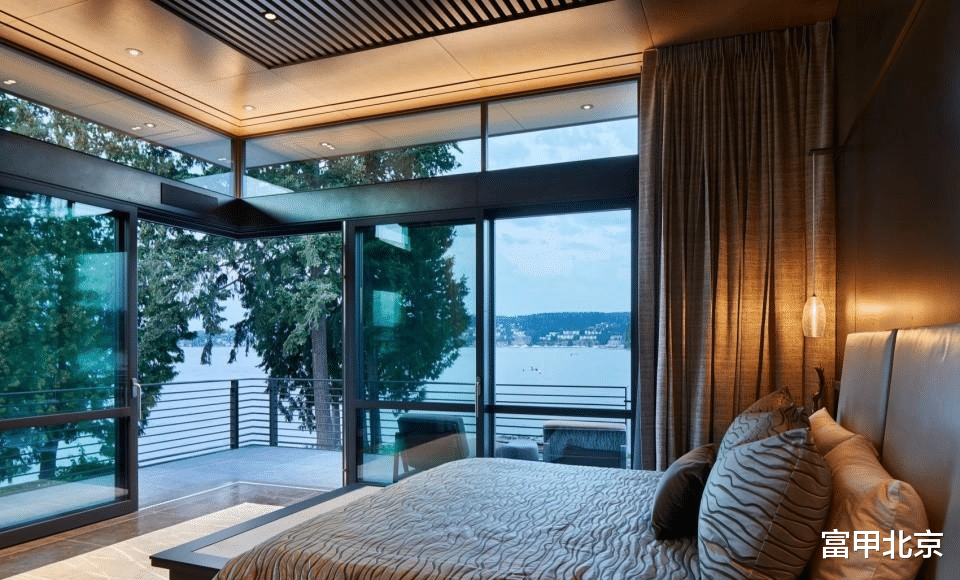
▼浴室,bathrooms©Benjamin Benschneider
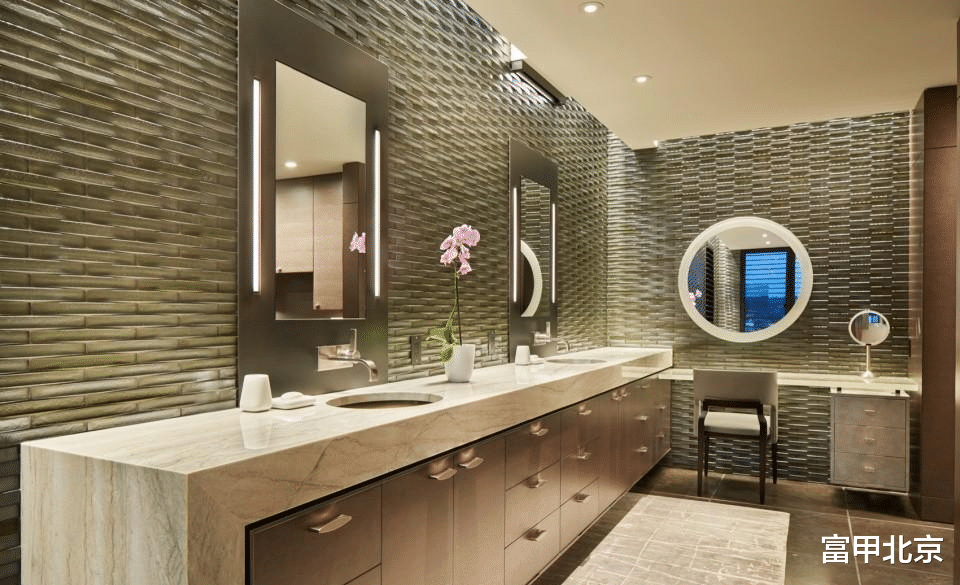
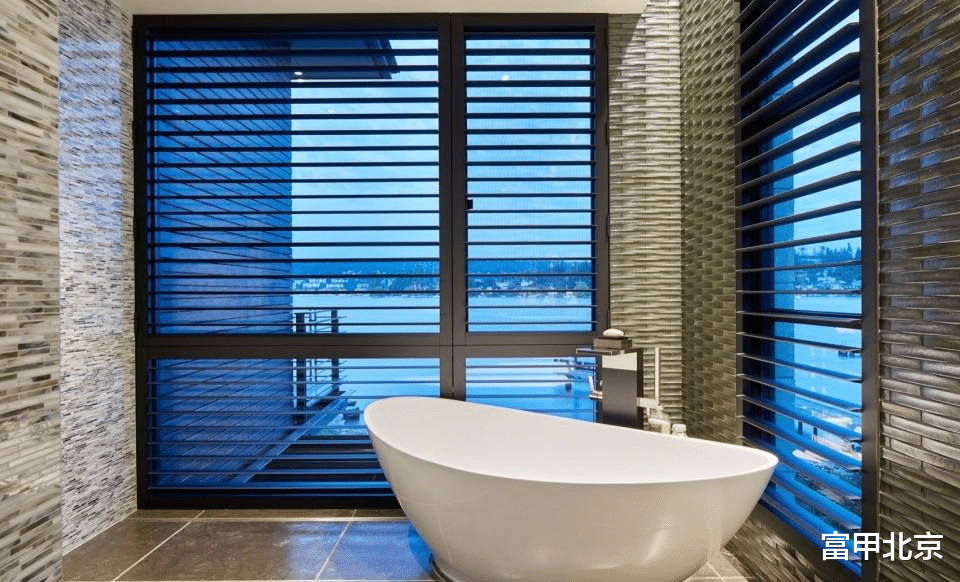
▼洗手池,washing basin©Benjamin Benschneider
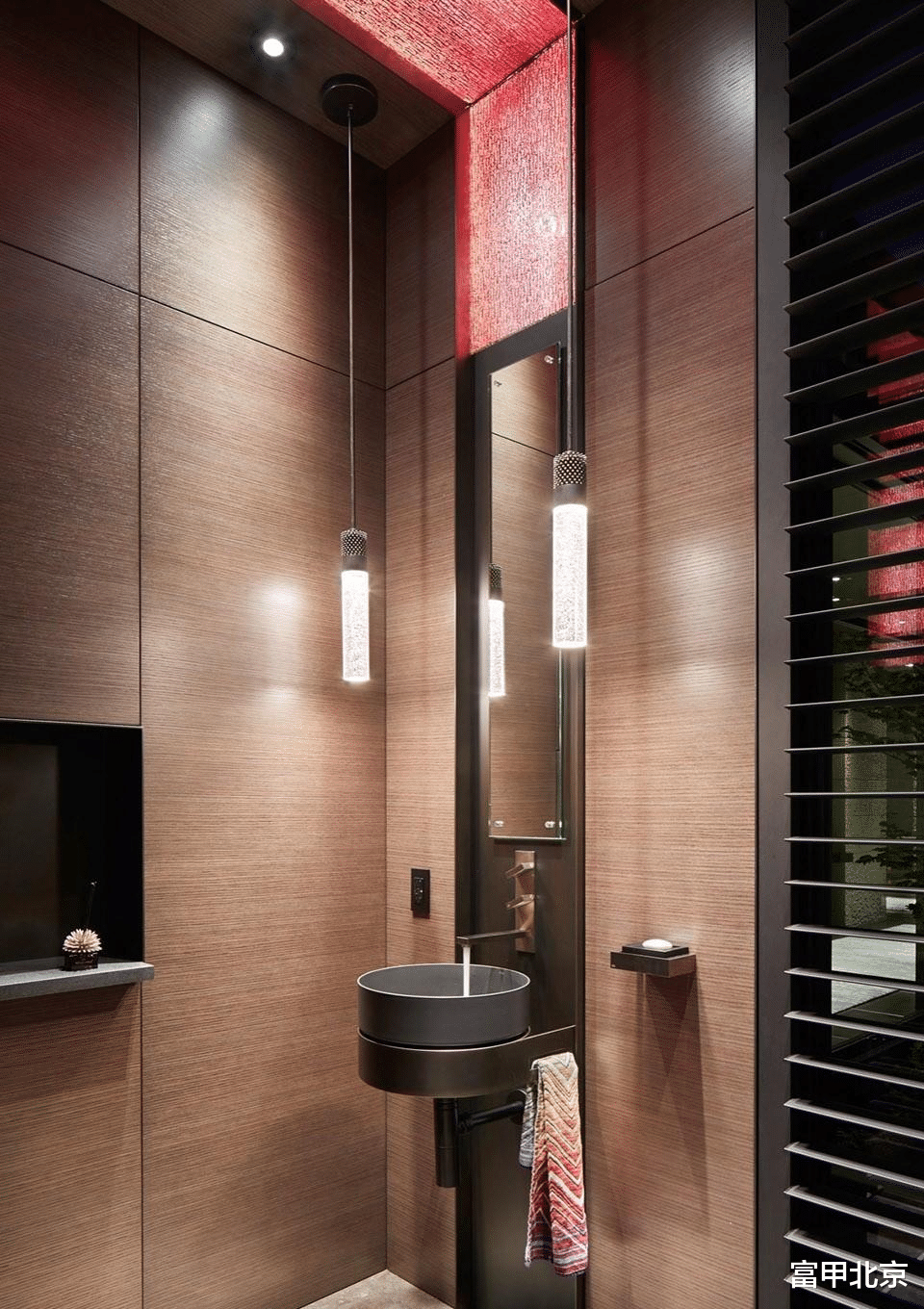
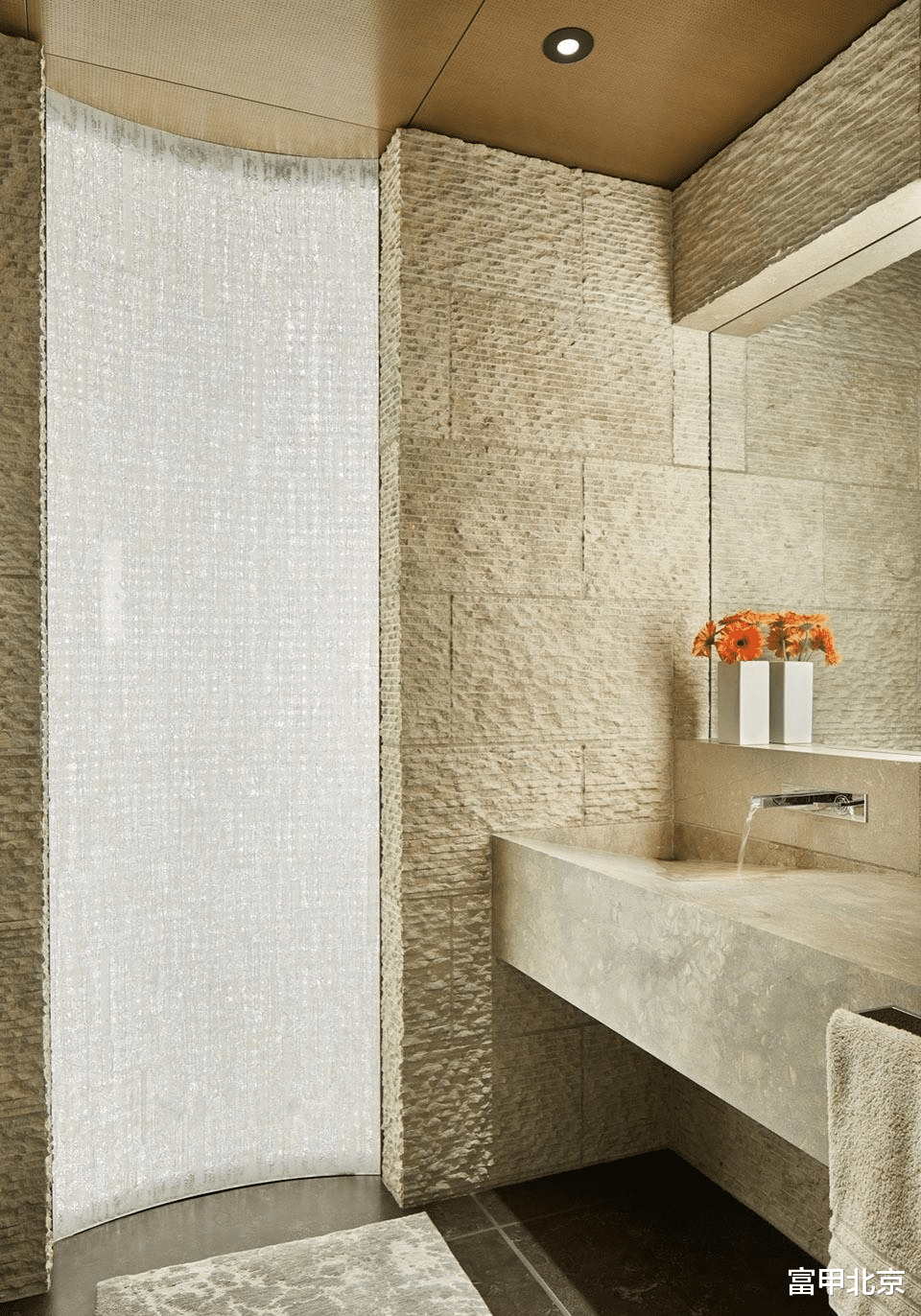
▼楼梯,staircase©Benjamin Benschneider
